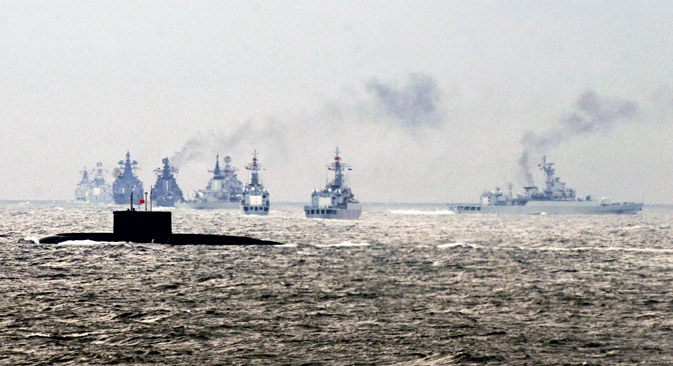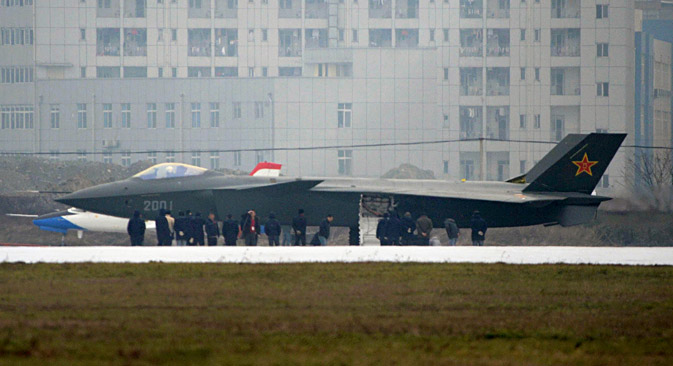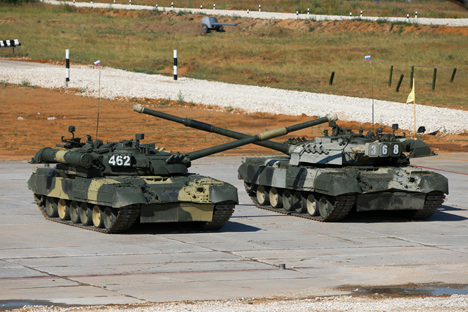China emulates Russian military strategy in the Pacific

A Chinese warship fires missiles during a China-Russia joint military exercise off China's Shandong Peninsula. Source: Reuters
Russia’s response to US naval build-up in the Pacific during the Cold War was disarmingly simple – anti-access and area denial (A2/AD). The Russians figured the US Navy could be targeted with saturation attacks using supersonic cruise missiles launched from a variety of platforms. Key to this was Moscow’s 800-ship Pacific Fleet – supported by long-range naval aviation, attack submarines and an array of electronic warfare aircraft.
However, the downsizing of the Russian Navy and maritime aviation following the end of the Cold War in 1991 created a huge vacuum in the Pacific. The US Navy was able to reclaim its top dog position once again. But in geopolitics when one power fades away there’s always another country ready to take its place. Enter China.
China’s People Liberation Army (PLA) – a protégé of the Russian military – is emulating its former big brother’s successful military strategy in the Pacific. Faced with an alarming build-up of US military forces in the Western Pacific, Beijing is employing asymmetric strategies to fend off the American challenge.
According to a study prepared by naval affairs specialist Ronald O’Rourke for the US Congress, “China’s maritime A2/AD force can be viewed as broadly analogous to the sea-denial force that the Soviet Union developed during the Cold War with the aim of denying the US use of the sea and countering US naval forces.”
For instance, the use of long-range bombers armed with supersonic cruise missiles to target American aircraft carriers was an old Russian tactic that Beijing is now following. Russia’s mix of strategic and tactical bombers was a critical threat to US Navy carriers, and the strategy suits China’s anti-access system.
O’Rourke’s report titled ‘China Naval Modernization: Implications for US Navy Capabilities’ says anti-ship-ballistic missiles (ASBM), air-launched cruise missiles (ALCMs), attack submarines and supporting electronic warfare ships and aircraft are viewed as key elements of China’s emerging maritime A2/AD force.
Targeting a carrier group is the easy part, but first you have to find it in the endless expanse of the ocean. Hitting a moving target is never easy because by the time the missile arrives, the carrier group may have moved dozens of miles away. But China may have closed that gap. “One difference between the Soviet sea-denial force and China’s emerging maritime A2/AD force is that China’s force includes ASBMs capable of hitting moving ships at sea,” says the US Congress report.
If the boffins in Beijing have indeed developed such a missile, it’s going to be a huge deterrent to US naval power projection not just in the Pacific but worldwide.
Works on paper but will it work at sea?
But how effective is this plan of action? US carrier groups comprise dozens of modern ships that each have individual anti-missile systems and are also geared to protect the entire fleet. Each carrier also has up to 90 jet fighters that can potentially stop enemy aircraft from coming anywhere near the group. Plus, carrier-based early warning and jamming aircraft can scan a radius of at least 300 km. Wouldn’t all that be hard to beat?
Yes, if you are reading the ship’s manual or Pentagon handouts. In reality, no western warship – existing or planned – has the ability to stop the supersonic Raduga Kh-22 (NATO name AS-4 Kitchen) cruise missile or its smaller version, the KSR-5. In fact, during the 1980s, Russian naval aviation was so sure about the accuracy of these missiles that Russian bombers such as the Backfire carried only one Kh-22, armed with a nuclear warhead.
According to weapons expert Bill Sweetman and Bill Gunston these missiles could be “programmed to enter the correct Pentagon window”. Their accuracy would only have increased over the past three decades.
Says Air Power Australia (APA): “We have since then learned that the Soviet bombers, support jamming electronic warfare systems and anti-ship cruise missiles (ASCMs) generally performed better than we had thought, and their ASCMs had far more lethal warheads than believed during the Cold War period.”
China’s game plan
China’s strategy envisages the development of a strategic bomber force that will be able to reach targets as far as Australia and Guam, both of which host massive American military bases. Whether the Chinese use their old H-6 bomber (copy of the Russian Tu-16 Badger) or manage to acquire the Backfire, in APA’s view the PLA force structure will emulate the reconnaissance, targeting and strike force tactics of Russian naval aviation.
The study of Soviet naval aviation strategy and doctrine remains relevant today, says APA. “In the strategic context it is because China and India have both adopted the Soviet force structure and doctrinal model. In the technical context it is because most of the systems available today in the market are evolved variants or descendants of these Soviet designs.”
The Chinese have not only bought Russian missiles off the shelf but also reverse engineered Russian cruise missiles acquired on the sly via Ukraine. Chinese improvements will undoubtedly lead to even more potent missiles that will pose a formidable threat to the US Navy.
Says APA: “Modern digital guidance systems and radar or anti-radiation seekers, more refined midcourse autopilot algorithms, and improved propellants would result in weapons with greater range and lethality than the analogue originals. Even modest application of radar absorbent materials would significantly reduce detection ranges and engagement opportunities for warships defending against these weapons, which given their high speed, would present a major problem.”
How much is Russia willing to give?
In its frantic bid to neutralise US military power, Beijing is eyeing strategic Russian weapons. How much is Moscow willing to give? Earlier, strategic weapons were off the table. Now, as the West applies sanctions and ever more sanctions, Moscow could change tack and supply China with the big toys like the Backfire bomber and Akula submarine (which has earlier only been supplied to India).
“The continued deterioration of relations between Russia and NATO may not yet have resulted in a new Cold War, but it’s undoubtedly producing an environment in which Russia has independent reasons to try to hurt the United States,” writes Robert Farley of the National Interest.
Russia has already cleared the sale of the S-400 air defence system which provides a giant leap for China’s A2/AD arrangement. The S-400 allows China to track targets in Taiwanese airspace.
But one area where China lags badly and Russia leads the world is in super quiet attack submarines. “While the PLA Navy’s subs expect to fill broadly similar missions to those conducted by Soviet boats in the Cold War, Chinese submarines remain much noisier than their Russian counterparts, and China has yet to perfect a hunter-killer sub that can tangle directly with the most advanced American submarines,” writes Farley.
“To be sure, Russia has closely guarded its submarine technology in the past, and production techniques for submarines appear to be some of the most difficult industrial processes to master, or transfer. Nevertheless, the leasing of an Akula to India in recent years suggests that Russia is open to the possibility of an arrangement.
Endgame
Countering American influence in the Pacific and asserting China’s new found status as a major world power are two key aims of Chinese naval strategy in the 21st century.
China’s 2015 Military Strategy, released in May 2015, places an emphasis on maritime operations: “It is necessary for China to develop a modern maritime military force structure commensurate with its national security and development interests, safeguard its national sovereignty and maritime rights and interests, protect the security of strategic sea lines of communication and overseas interests, and participate in international maritime cooperation, so as to provide strategic support for building itself into a maritime power.”
Like Japan before it, China has a burning desire to keep the western powers out of Asia. Unlike Japan’s blitzkrieg that ultimately failed, the Chinese have gone for the barely noticeable “salami slicing” strategy to attain their objectives. With the US equally determined to stay, prepare for things to escalate before they get better.
All rights reserved by Rossiyskaya Gazeta.
Subscribe
to our newsletter!
Get the week's best stories straight to your inbox




.jpg)